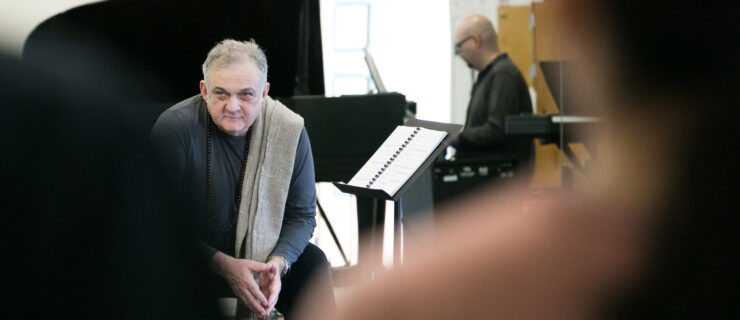Cross-Train Like David Hallberg: His Stair Running Regimen
While David Hallberg was recovering from Achilles tendinopathy, one of the treatments that the Australian Ballet rehab team gave him was a stair running exercise. “This is an exercise David needs to continue to do forever, every day,” says AB’s principal physiotherapist Sue Mayes.
The basic idea is to run up and down flights of stairs to the beat of a metronome in order to monitor and challenge the intensity and volume of loading on the Achilles tendon. The exercise simultaneously strengthens the tendon and provides a cardiovascular workout.
(Today, Hallberg is back in action and up to more than ever before, including a major Nike campaign.)
Try it:
Begin in a gradual way, taking slow steps up and down stairs on a low relevé. The goal is to find a position where the heel is lifted but can remain stable (this may be half the height of your normal relevé). At first, the ankle should not move at all as you take slow steps up and down. Maybe it is only a few stairs, or one flight to start. Eventually, you can add more stairs/flights.
Why use a metronome?
Setting a steady beat ensures an uniform pace. “Keeping a consistent pace with a metronome helps both on a cognitive level and to maintain a consistent tendon load,” explains Mayes. The tempo should be slow at first, to allow you to control the alignment of your ankle. Gradually, you can increase the speed.
The goal:
As you increase speed and the number of stairs over time, you can add more range of motion in your ankle, and the slow steps you have been practicing can develop into more of a bounding type of action up and down.
Hallberg’s approach:
To keep his Achilles tendon strong and resilient, Hallberg now does this daily, for a 20-minute interval, skipping steps on the ascent to a beat of 165BPM.




